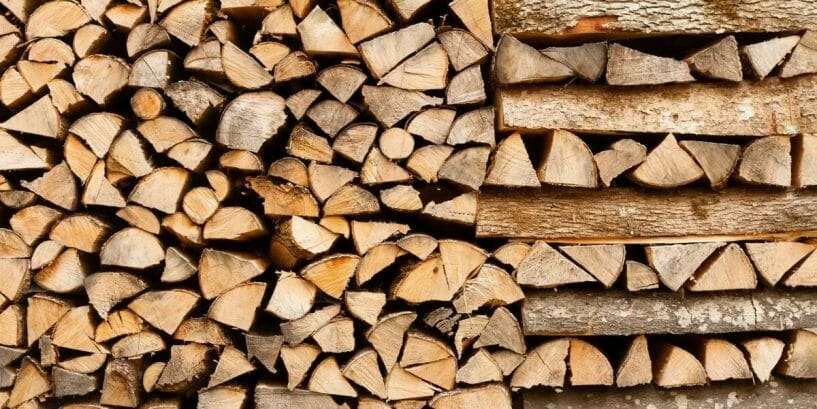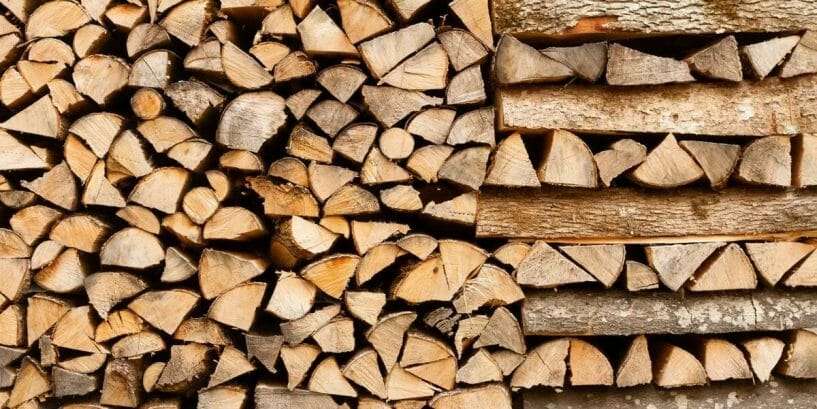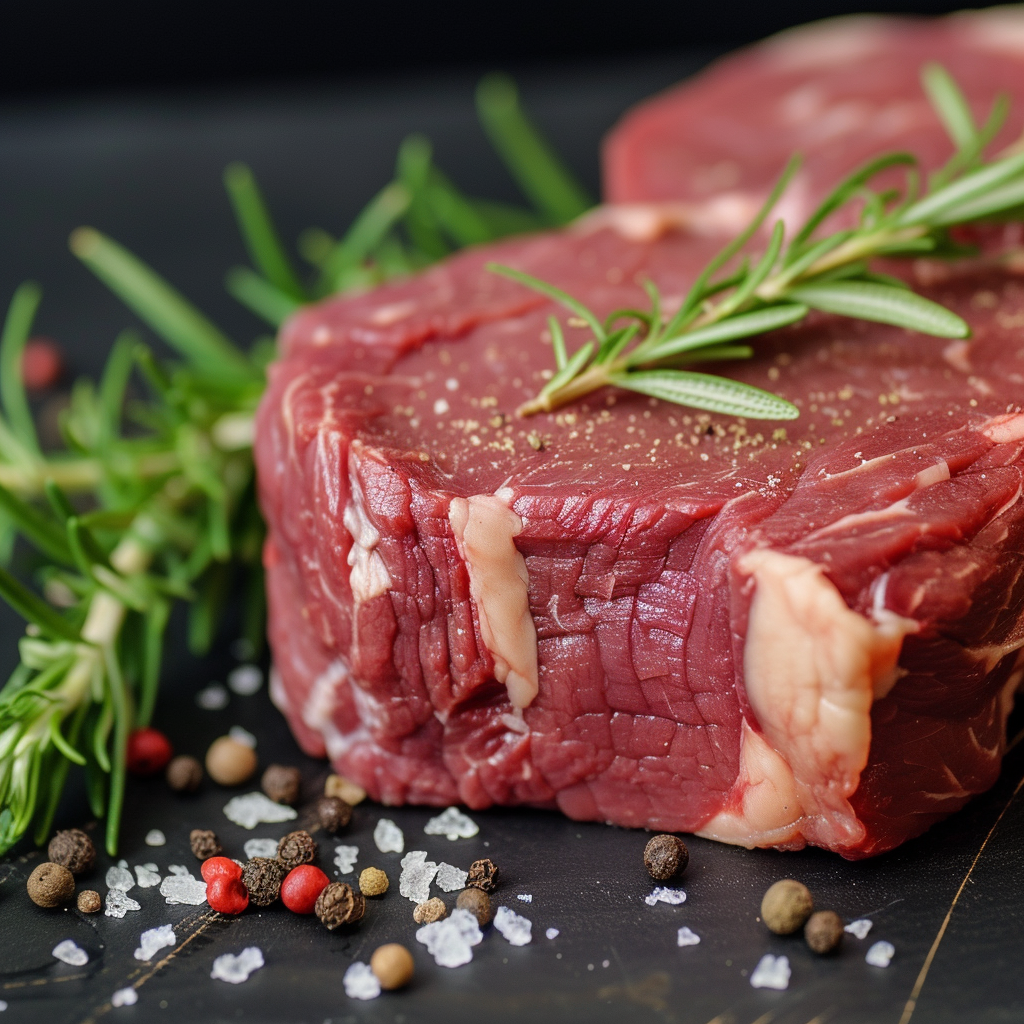When it comes to building a fire, not all firewood is created equal. Understanding the heat output and smell of different types of firewood can greatly enhance your fire experience and create a cozy atmosphere. From fruity and sweet scents to smoky and savory aromas, the right firewood can create a pleasant and long-lasting fragrance when burned. Popular choices for firewood include aromatic hardwoods like cedar, hickory, cherry, and apple wood, which produce delightful scents. Additionally, fruit tree woods like apple, cherry, and pear offer sweet and pleasant fragrances that can transform a simple fire into a sensory delight. However, it’s important to remember that not all firewood is safe to use, as some may be toxic or harbor pests and burrowing insects. By selecting firewood carefully and ensuring it is fully cured and dry, you can enjoy the optimal smell and burning experience while avoiding any unpleasant surprises.
Understanding heat output
Importance of heat output in firewood
When it comes to selecting firewood, one of the most important factors to consider is its heat output. The heat output of firewood directly impacts the effectiveness and efficiency of your fires. Choosing firewood with high heat output ensures that you can keep warm and cozy during those chilly nights.
Factors that affect heat output
Several factors can affect the heat output of firewood. The density of the wood plays a significant role in determining how long the fire will last and how much heat it will produce. Generally, hardwoods have a higher heat output compared to softwoods due to their higher density.
The moisture content of the firewood also affects its heat output. Wet or green firewood contains a substantial amount of water, which hinders the combustion process and significantly reduces the heat output. It is essential to use fully cured and dry firewood to maximize heat output and ensure efficient burning.
Types of firewood with high heat output
Among the various types of firewood available, certain varieties are known for their high heat output. Hardwoods like oak, hickory, and maple are excellent choices due to their density and ability to burn for a more extended period. These hardwoods provide a steady heat output, making them ideal for long, cozy fires.
Additionally, species like birch and ash are also known for their high heat output. These firewoods burn hot and are perfect for quickly heating up a room or space.
Comparing heat output of different firewood types
When comparing heat output between different types of firewood, hardwoods consistently outperform softwoods. Softwoods like pine and spruce may be easier to light and ignite quickly, but they burn faster and produce less heat compared to hardwoods.
By selecting firewood with higher density and lower moisture content, you can ensure a more efficient fire that provides ample heat output to keep you warm and comfortable.
Understanding smell
Importance of smell in firewood
Apart from heat output, the smell of firewood can greatly enhance the overall fire experience. The aroma that emanates from burning firewood creates a sense of relaxation and comfort. It contributes to the cozy atmosphere and adds an extra layer of enjoyment to the fire.
Factors that affect the smell of firewood
Several factors can influence the smell of firewood. The type of wood used plays a significant role in determining the scent released when burned. Different woods emit different fragrances, ranging from sweet and fruity to smoky and savory. The age and condition of the firewood also impact its smell.
Different types of smell in firewood
Firewood can have a wide range of smells, each unique and enjoyable in its own way. Some wood types, like apple, cherry, and pear, have sweet and pleasant scents that fill the air when burned. These fruity smells create a delightful atmosphere and are often a popular choice for firewood.
On the other hand, there are woods with more distinct smells, such as cedar or pine. The distinctive aroma of these woods adds a touch of earthiness to the fire and can create a calming and grounding effect.
The impact of firewood smell on the environment
The smell of firewood not only enhances our experience but also has an impact on the environment. When burned, the fragrant particles released into the air can contribute to air pollution. It is crucial to select firewood with pleasant smells, as these scents can linger and absorb into clothes and textiles. By using firewood with pleasant smells, we can enjoy the aroma during the fire, but also prevent any unwanted lingering smells on our belongings.
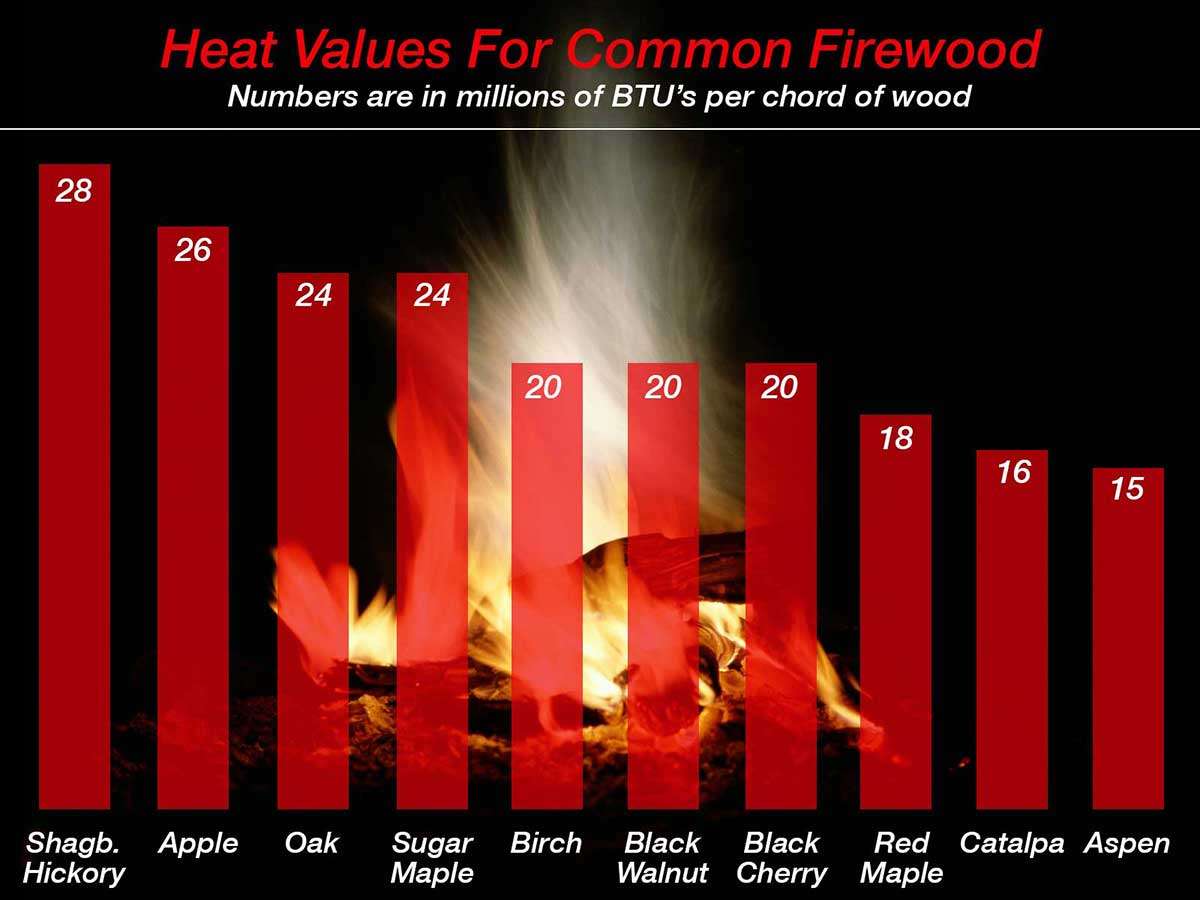
Best smelling firewood
Introduction to best smelling firewood
If you’re looking to create a fire with a delightful and aromatic scent, there are several types of firewood to consider. The best smelling firewood includes cherry, apple, pear, pine, mesquite, hickory, pecan, cedar, oak, birch, alder, and walnut. Each of these woods adds its own unique fragrance to the fire, enhancing the overall experience.
Types of wood with fruity smells
Fruit tree woods like cherry, apple, and pear are known for their sweet and pleasant scents. Burning these woods releases fragrances reminiscent of the fruits themselves. The aroma of cherry wood, for example, has a subtle sweetness that fills the air and creates a soothing ambiance.
Apple wood, on the other hand, offers a slightly stronger and more distinct fruity scent. The aroma from burning apple wood can evoke memories of apple orchards and autumn afternoons.
Pear wood also contributes to a delightful fire experience with its subtly sweet and refreshing fragrance. It brings a unique twist to the fruity scents commonly associated with firewood.
Types of wood with distinct smells
Other woods, such as cedar and pine, offer more distinct and recognizable smells. Cedar wood has a rich, earthy aroma that adds a touch of warmth and comfort to any fire. The scent of pine wood, on the other hand, is fresh and invigorating, reminiscent of a serene forest.
Types of wood with nutty smells
If you’re looking for firewood with a nutty aroma, woods like hickory, pecan, and walnut are excellent choices. Hickory wood releases a sweet and smoky fragrance when burned, similar to the scent of bacon. It adds a delicious and savory element to the fire.
Pecan wood, with its distinct and rich nutty smell, creates an inviting atmosphere. The scent of burning pecan wood can evoke images of freshly baked pies and holiday gatherings.
Walnut wood, although less commonly used as firewood, offers a unique nutty fragrance. The subtle smell of roasted walnuts adds an element of warmth and comfort to the fire.
Overview of cherry wood
Cherry wood is a popular choice for firewood due to its excellent heat output and pleasant aroma. When burned, cherry wood releases a sweet and fruity scent that enhances the overall fire experience. It is also known for its beautiful reddish-brown color, adding an aesthetic appeal to the fire.
Overview of apple wood
Apple wood is highly sought after for its sweet and distinct fruity smell when burned. The aroma it produces is reminiscent of fresh, ripe apples. This makes apple wood a favorite among those who enjoy a cozy fire with a touch of natural sweetness.
Overview of pear wood
Pear wood, while less commonly used as firewood, offers a unique fragrance when burned. With its delicate and subtly sweet scent, pear wood can create a refreshing and pleasant atmosphere around the fire. It adds a touch of novelty to any fire experience.
Overview of pine wood
Pine wood is prized for its fresh and invigorating aroma. The scent of burning pine wood instantly transports you to a tranquil forest setting. It is perfect for those who prefer a more crisp and natural fragrance in their fires.
Overview of mesquite wood
Mesquite wood, originating from the American Southwest, is known for its strong and intense scent. When burned, mesquite wood releases a smoky and slightly sweet fragrance, adding depth and character to the fire. It imparts a unique Southwestern charm to any fire experience.
Overview of hickory wood
Hickory wood is renowned for its delicious smoky and savory fragrance. The scent of burning hickory wood is often associated with barbecues and adds a mouthwatering element to the fire. Its strong and distinct aroma creates a cozy and welcoming atmosphere.
Overview of pecan wood
Pecan wood offers a rich and nutty aroma when burned. The smell of this firewood adds a warm and comforting touch to the fire, reminiscent of freshly roasted nuts. Pecan wood provides both a delightful scent and excellent heat output, making it an excellent choice for fires on cold nights.
Overview of cedar wood
Cedar wood is celebrated for its rich and earthy fragrance. When burned, cedar wood releases a warm and comforting scent that fills the air. The aroma of cedar wood adds a touch of tranquility and relaxation to the fire, creating a serene atmosphere.
Overview of oak wood
Oak wood is a classic choice for firewood due to its longevity and high heat output. It also offers a subtle and pleasant scent when burned. The fragrance of oak wood contributes to the cozy ambiance of the fire, making it a popular choice for many fire enthusiasts.
Overview of birch wood
Birch wood is known for its bright white bark and striking appearance. When burned, birch wood emits a mild and slightly sweet fragrance. The scent adds a touch of elegance to the fire, creating a pleasing and enjoyable experience.
Overview of alder wood
Alder wood is commonly used for smoking and grilling due to its mild and slightly sweet flavor. When burned, alder wood releases a subtle and enjoyable aroma that enhances the overall fire experience. Its gentle scent lends itself well to creating a cozy and inviting atmosphere.
Overview of walnut wood
Walnut wood, although less frequently used as firewood, has a unique and distinct nutty fragrance. When burned, walnut wood adds a warm and comforting smell to the fire, inviting you to cozy up and relax. Its rich aroma creates an inviting ambiance, perfect for those cold winter nights.
Absorption of firewood smell
Implications of firewood smell absorption
One important aspect to consider when using firewood is the potential absorption of its smell. The fragrant particles released when burning firewood can be absorbed by clothes, textiles, and other porous materials. This can result in lingering smells that persist even after the fire has been extinguished.
Materials affected by firewood smell
Clothing, upholstery, curtains, and other fibrous materials have a higher likelihood of absorbing firewood smells. This absorption can be particularly problematic if the firewood being used has an unpleasant or pungent odor. It is important to be mindful of the firewood you choose to prevent any unwanted smells from permeating your belongings.
Preventing firewood smell absorption
To prevent the absorption of firewood smells, there are a few steps you can take. First, ensure that the firewood you use has a pleasant and desirable scent. This will minimize the chances of any unwanted smells lingering on your clothes or furniture.
Additionally, it is important to properly ventilate the area where the firewood is being burned. Proper air circulation can help disperse the fragrant particles and minimize their absorption by nearby materials.
Lastly, consider using a dedicated firewood storage area or container to keep the wood separate from your belongings. This will help contain any smells and reduce the chances of absorption.
By being proactive and mindful of the potential absorption of firewood smells, you can enjoy the delightful fragrances without any unwanted consequences.
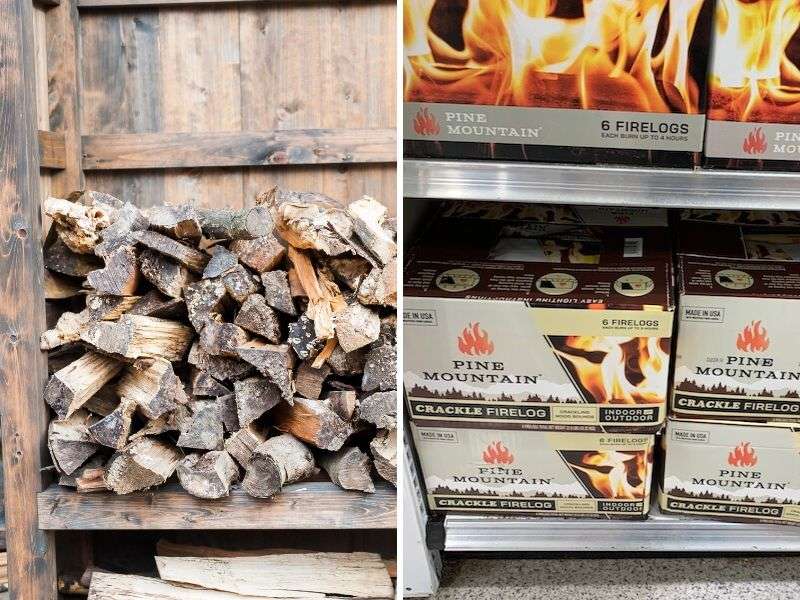
Importance of fully cured and dry firewood
Effects of using wet or uncured firewood
Using wet or uncured firewood can have several negative effects on your fire experience. Wet firewood contains a significant amount of moisture, which hinders the combustion process. This results in decreased heat output, difficulty in lighting the fire, and excessive smoke production.
Uncured firewood, also known as green wood, has not had enough time to dry properly. It can contain a higher moisture content than fully cured firewood. Burning uncured firewood leads to inefficient combustion, reduced heat output, and increased creosote buildup in chimneys, which can be a fire hazard.
Optimal conditions for firewood curing
To ensure optimal heat output and efficient burning, firewood should be fully cured and dry. The drying process allows the wood to reach a moisture content of around 20% or less, making it suitable for burning. Ideally, firewood should be seasoned for at least six months to a year to achieve proper dryness.
During the curing process, firewood should be stored in a well-ventilated area, protected from rain and snow. Proper stacking and airflow around the wood allow moisture to evaporate, ensuring the wood becomes dry and ready for use. Splitting the wood into smaller pieces can also expedite the drying process by increasing the surface area exposed to air.
Methods to determine firewood dryness
To ensure firewood is fully cured and dry, there are some simple methods to test its dryness. One method is to examine the ends of the wood pieces. Dry firewood will have cracks radiating from the center of the end grain. These cracks indicate that the wood has dried properly.
Another method involves testing the weight of the wood. Dry firewood will feel lighter compared to wet or green wood. If the wood feels heavy and moist to the touch, it may still require further drying before use.
By using these methods to determine firewood dryness, you can ensure optimal heat output and efficient burning, resulting in a more enjoyable fire experience.
Toxic and pest-infested firewood
Dangers of using certain types of firewood
It is essential to be aware of the potential dangers associated with using certain types of firewood. Some woods contain toxins that can be released when burned, leading to health implications. Additionally, firewood can harbor pests and burrowing insects that can infest your home or cause damage to surrounding structures.
Wood toxins and health implications
Certain types of firewood, such as oleander, yew, and poison ivy, contain toxins that can be released when burned. These toxins can irritate the respiratory system and cause allergic reactions or other health problems. It is crucial to avoid using firewood from these toxic tree species.
Wood treated with chemicals, such as pressure-treated lumber or painted and stained wood, should also be avoided. Burning these types of wood releases harmful chemicals and pollutants into the air, posing health risks.
Common pests and burrowing insects in firewood
Firewood can provide a habitat for various pests and burrowing insects. Termites, carpenter ants, beetles, and wood-boring insects are common culprits that can infest firewood. These insects can cause damage to the wood itself and potentially spread to nearby structures, like your home.
Using firewood that is infested with pests or burrowing insects can lead to an unwanted infestation in your home or outdoor structures.
Avoiding toxic and pest-infested firewood
To avoid the dangers associated with toxic and pest-infested firewood, it is important to be cautious about the source of your firewood. Purchase firewood from reputable suppliers who ensure that the wood has been properly harvested and processed. Avoid collecting firewood from unknown sources, as it may be contaminated or infested.
Inspect the firewood for signs of pest infestation, such as visible holes or tunnels, sawdust, or insect activity. If you suspect that the firewood may be infested, it is best to dispose of it properly and avoid using it for burning.
By being vigilant and aware of the potential dangers, you can ensure that your firewood is safe, clean, and free from toxins and pests.

Scent variations in burned firewood
Factors contributing to scent variations
When firewood is burned, the resulting scent can vary depending on several factors. The type of wood used is an essential factor in determining the scent released. Each wood species has its own unique aromatic properties that contribute to the overall scent of the fire.
The stage of wood decomposition can also influence the scent. Woods that are more aged or partially decayed may emit earthier or muskier smells when burned.
Lastly, the burning conditions, such as the temperature and airflow, can affect the scent produced. Higher temperatures tend to release more volatile compounds, resulting in stronger aromas.
Sweet and fruity scented firewood
Some firewood species produce sweet and fruity scents when burned, adding a touch of natural fragrance to the fire. Woods like cherry, apple, and pear emit delightful aromas reminiscent of their fruit counterparts. These woods create a pleasant and inviting ambiance that enhances the overall fire experience.
Savory and smoky scented firewood
Other firewood varieties offer more savory and smoky scents when burned. Woods like hickory and mesquite impart their distinct flavors to the fire, creating an aromatic environment reminiscent of barbecues and outdoor cooking. The deep and rich aromas add a flavorful element to the fire experience.
Overview of aromatic hardwoods
Aromatic hardwoods, characterized by their pleasing fragrances, are highly sought after for fires. Woods such as cedar, hickory, cherry, and apple wood are known for their pleasant scents that linger long after the fire has gone out. These aromatic hardwoods provide a delightful and long-lasting fragrance, making them popular choices for creating a cozy and inviting atmosphere.
By selecting firewood with scents that align with your preferences, you can tailor the aroma of your fire to create a personalized and enjoyable experience.
Enhancing the fire experience
Creating a cozy atmosphere with firewood
Using firewood goes beyond simply providing heat. It creates a cozy and inviting atmosphere that can enhance social gatherings or quiet evenings alone. The crackling sound and dancing flames of a fire, combined with the fragrance of burning firewood, create a warm and comforting ambiance.
To create a cozy atmosphere, consider using firewood with pleasant scents that align with the mood or occasion. Aromatic hardwoods like cedar or cherry wood can add a touch of elegance and tranquility to any fire experience.
Choosing the right firewood for specific occasions
Different occasions call for different firewood choices. For a romantic evening, choosing firewood with a sweet and fruity scent like apple or pear wood can set the mood and create a romantic ambiance. On the other hand, gatherings or parties may benefit from the savory and smoky scents of woods like hickory or mesquite, evoking a sense of festivity and outdoor cooking.
By selecting the appropriate firewood for specific occasions, you can create the desired atmosphere and enhance the overall experience.
Using firewood to create pleasant ambiance
Firewood can be used strategically to create a pleasant ambiance in various settings. In indoor settings, a fireplace or wood-burning stove can serve as a focal point, radiating warmth and comfort. Burning firewood with delightful scents like cedar or cherry wood adds an extra layer of ambiance, transforming the space into a cozy retreat.
In outdoor settings, fire pits or campfires can create a relaxing and enjoyable atmosphere. The scent of burning firewood wafting through the air can enhance the connection to nature and create a sense of tranquility. By carefully selecting the firewood, you can elevate the outdoor ambiance and make the experience memorable.
By understanding the impact of firewood on creating ambiance, you can utilize it to its fullest potential and enhance the atmosphere in various settings.

Popular choices for firewood
Introduction to popular firewood choices
When it comes to selecting firewood, several varieties have gained popularity due to their desirable qualities. These firewood choices offer a balance of heat output, scent, and burning characteristics, making them preferred options for many.
Overview of cedar wood
Cedar wood is a popular choice for its pleasant scent, excellent heat output, and beautiful flame spectacle. It produces a delightful fragrance, creating a cozy and soothing atmosphere. Cedar wood burns well, providing a steady heat output and infusing the surroundings with its aromatic properties.
Overview of hickory wood
Hickory wood is highly valued for its exceptional heat output and distinctive smoky scent. The wood burns slowly and hot, making it ideal for long-lasting fires that radiate warmth. The savory aroma of hickory creates a sensational experience and is often associated with mouthwatering barbecues.
Overview of cherry wood
Cherry wood is a favorite among fire enthusiasts for its excellent heat output and delightful aroma. Its pleasant fragrance adds an exquisite touch to the fire experience. Cherry wood burns evenly and provides a steady heat source, making it perfect for those cozy and tranquil evenings.
Overview of apple wood
Apple wood is prized for its fruity fragrance and high heat output. When burned, apple wood releases a delightful scent reminiscent of fresh apples. It brings a natural sweetness to the fire, creating an inviting and warm atmosphere. Apple wood also burns slowly and evenly, making it an excellent choice for long, relaxing fires.
Overview of pear wood
Pear wood, although less commonly used as firewood, offers a delightful scent when burned. Its subtly sweet and refreshing aroma fills the air, adding a touch of novelty to the fire experience. Pear wood provides a steady heat output and creates a cozy ambiance, perfect for those quiet evenings gathered around the fire.
By considering these popular firewood choices, you can select the type that best suits your needs and preferences, ensuring an enjoyable and efficient fire experience.
Comparison of softwoods and hardwoods
Differences between softwoods and hardwoods
When it comes to firewood, there are two main categories: softwoods and hardwoods. Understanding the differences between the two can help you make an informed choice based on your specific requirements.
Softwoods come from evergreen trees and tend to be less dense compared to hardwoods. Softwoods generally burn faster and produce more smoke due to their higher resin content. Examples of softwood species commonly used for firewood include pine and spruce.
Hardwoods, on the other hand, come from deciduous trees and are denser than softwoods. They burn slower and produce less smoke, making them ideal for longer-lasting fires. Hardwoods include species like oak, hickory, and maple.
Pros and cons of softwoods
Softwoods have their advantages and disadvantages when used as firewood. The main advantages include their easy ignition and ability to burn quickly, which can be beneficial for starting fires or providing a quick burst of heat. Softwoods also tend to be more readily available and often less expensive compared to hardwoods.
However, there are some drawbacks to using softwoods. Due to their higher resin content, softwoods produce more smoke, which can be a nuisance and cause respiratory irritation. The rapid burn rate of softwoods may also require more frequent wood replenishment.
Pros and cons of hardwoods
Hardwoods offer several advantages when used as firewood. They tend to burn hotter and longer than softwoods, providing a steady and efficient source of heat. Hardwoods also produce less smoke, creating a more enjoyable fire experience and minimizing the risk of respiratory issues.
While hardwoods offer excellent heat output and efficient burning, they can be more challenging to ignite compared to softwoods. They also tend to be more expensive and less readily available.
Effect of softwoods on heat output and smell
When comparing softwoods and hardwoods in terms of heat output and smell, hardwoods generally outperform softwoods. Hardwoods have higher density, which results in higher heat output and longer-lasting fires. The denser nature of hardwoods also contributes to a more pleasant scent when burned.
Softwoods, on the other hand, burn faster and produce more smoke. While they may ignite more readily, their lower density and resin content result in reduced heat output and a stronger, sometimes overpowering scent.
By considering the pros and cons of softwoods and hardwoods, you can select the type of firewood that best suits your specific needs and desired fire experience.
